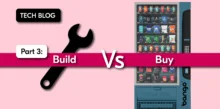‘Stay at home’ behavior leads to in-app payment surge
by Guy Singh

Scroll through social media, read the news, talk to people, you will discover a global stay-at-home trend emerging. People displaying COVID-19 symptoms are self-isolating or, in some countries, isolating through mandatory regulations. Others have opted to remote work to help stem the spread of the disease. Either way, staying behind closed doors is becoming the norm, at least for now.
As communities across the globe batten down the hatches, so online activity is rising. More meetings online and more video calls, plus more movies streamed, more music downloaded, more games played. This enforced change of lifestyle makes our mobile devices vital for keeping in touch but staying safe. For app developers, this could be an unexpected pocket of light during otherwise dark times.
Bango processes $billions of in-app payments from 100s of millions of users. From this, our data science team monitors trends in payment activity all year round. We can tell you that over the last 12 months we saw a doubling of end user spend, but we can also focus on shorter measurement periods. Stay-at-home spikes are most notable during holidays, religious and festive periods. For instance, we see increased spending during Chinese New Year, Easter, Ramadan, Hanukkah, Christmas and New Year.
As a result of the COVID-19 pandemic, our team is seeing a significant out-of-season spike of in-app payments, possibly as a result of people using their devices more during stay-at-home periods. This pattern of behavior could continue for 6 months or longer, depending on how the contain/delay strategies play out.
This presents a real opportunity for app developers to focus their marketing on paying users while there is more online activity. Costs of advertising often increase during seasonal stay-at-home periods, which means a sharper focus on ROI is needed. It seems logical to conclude that any users acquired during this period will yield much higher LTV compared to users in the past 12 months.
Subscribe to our newsletter
Get the latest subscription bundling news and insights delivered straight to your inbox.



